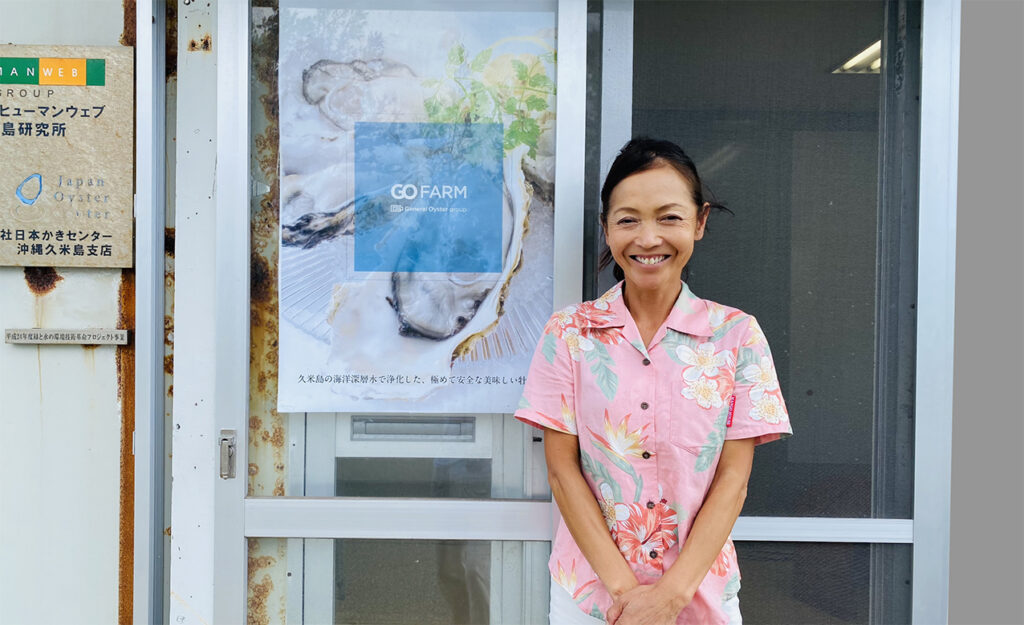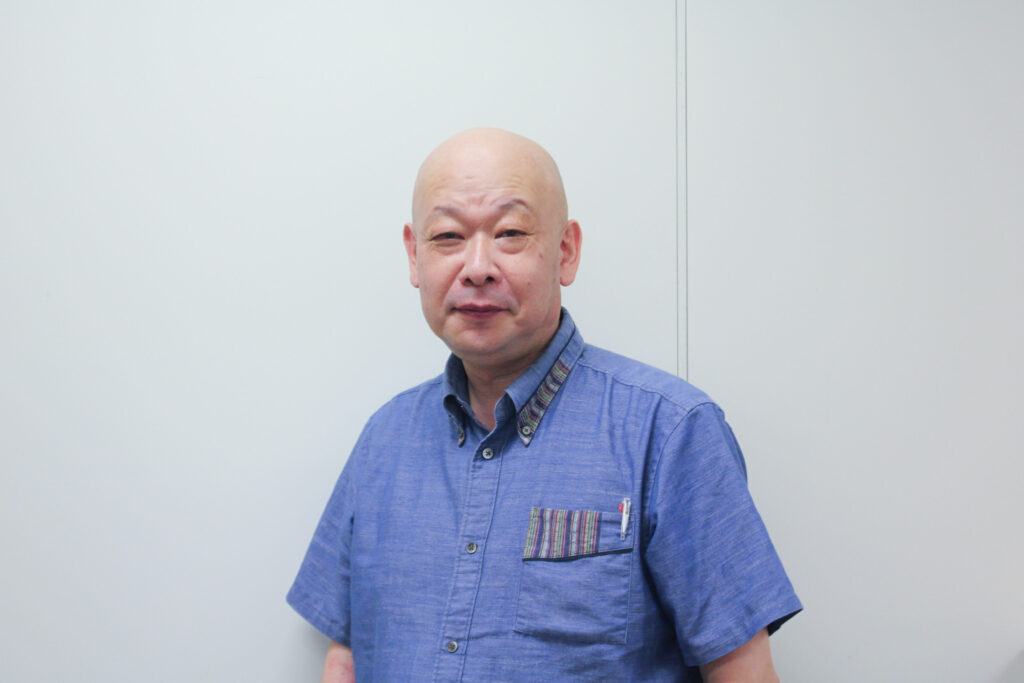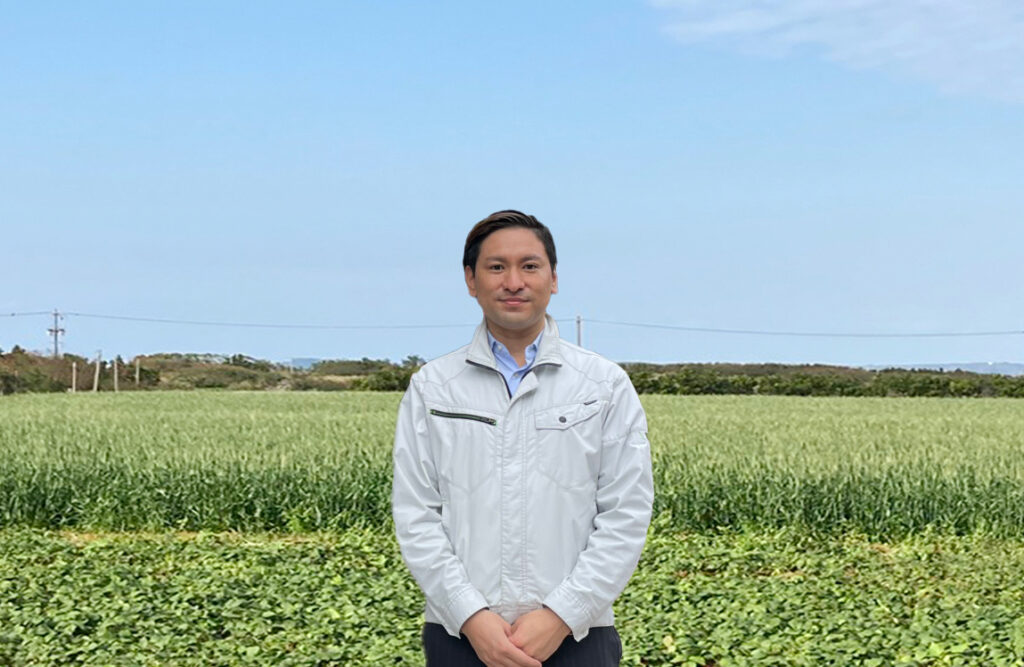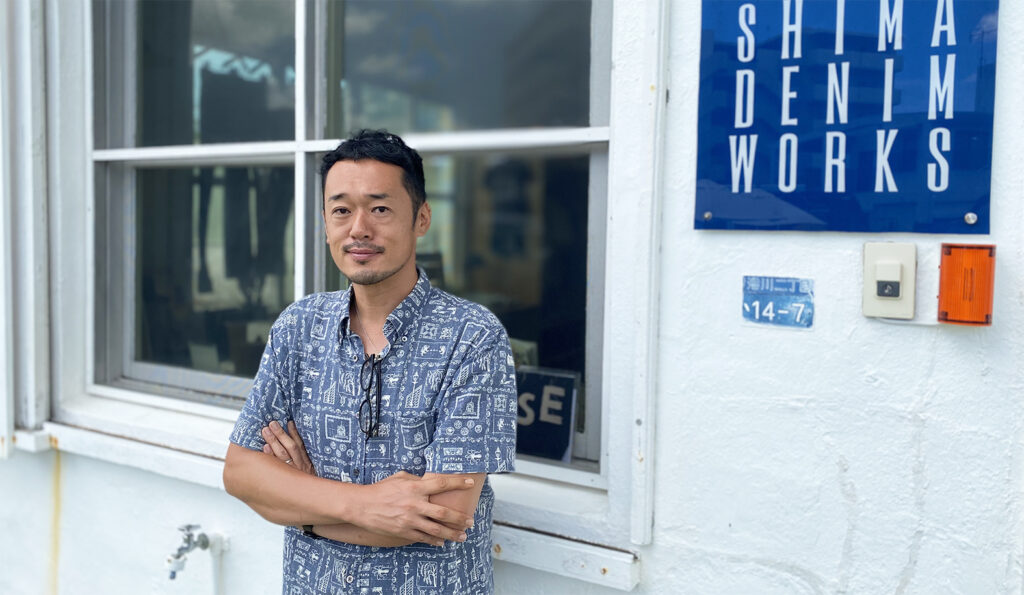The marine environment is deteriorating in our modern era, and issues such as the declining rate of farmed and wild marine species are becoming prominent. In these times of crisis, land-based solutions may shed light on our future.
This time, we interviewed President Kyoko Washiashi of GO Farm Inc., who achieved the world’s first entirely land-based oyster cultivation on Kumejima Island.
“I’m not an expert, but I didn’t give up!”
Land-based cultivation opposed by experts
About 30 minutes west by plane from Naha Airport lies the peaceful Kumejima Island, with a population of 7,400. GO Farm’s headquarters lies along the Kumejima seaside. Washiashi is the CEO of GO Farm, which was spun off from its parent company, General Oyster Co., which operates oyster bars nationwide. She moved to Kumejima from Tokyo in 2014 and, after nearly a decade, achieved her dream of the world’s first entirely land-based cultivation using deep ocean water, creating “virus-free oysters.”
“When I was working at the oyster bars in Tokyo, we received customer feedback that they got food poisoning from eating oysters. When we dealt with these cases, the question arose, ‘Can we make oysters that won’t make diners sick?'” said Washiashi.
Why do oysters cause food poisoning in the first place? Oysters circulate about 20 liters of seawater per hour through their bodies to ingest microalgae (AKA phytoplankton). During this process, the oysters also suck in domestic and industrial wastewater containing bacteria and viruses that flow into the ocean, when consumed, cause food poisoning. Generally, oysters intended for raw consumption are purified with UV-sterilized water before shipment, reducing the risk of sickness. However, while most viruses are eliminated, the complete removal of norovirus is near impossible, and thus, some contaminated oysters slip through pre-shipment inspections and circulate in the market. So, to combat the risk, if oysters are cultivated in an environment where bacteria and viruses are not ingested, this will result in “virus-free” oysters.
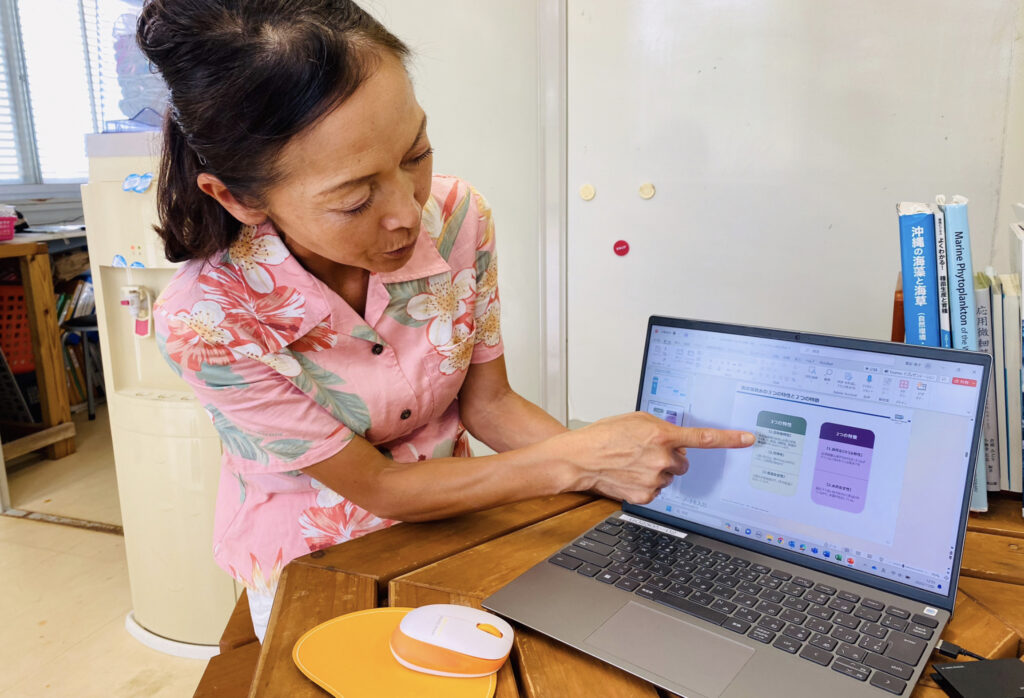
“At the time, when I consulted with experts in the field, ‘I want to produce virus-free oysters through land-based cultivation,’ they all exclaimed, ‘That’s impossible!'” she laughed.
Cultivating “no-virus oysters” on land had many complex obstacles. For example, deep ocean water without bacteria or viruses does not contain microalgae, the oyster’s food source. Therefore, it was necessary to produce the technology to cultivate large amounts of microalgae on land.
“However, as I was no expertise, I didn’t understand the challenges. So I asked the experts, ‘If it’s difficult, what can I do to make it possible?’ I didn’t give up.”
With an indomitable spirit, Ms. Washi spent her days working on her regular duties during the day and engaging in joint research at the University of Tokyo’s Agro-Biotechnology Research Center in the evening. Starting in 2011, she frequented the Deep Ocean Water Applications Society, based in Kumejima. Her tireless efforts bore fruit in 2013 when she discovered a stable mass cultivation technique for microalgae. She then relocated to the island as the president of GO Farm.
Clean Energy for Industrial Circularity
Problem-solving with the “Kumejima Model”
There are solid reasons why Kumejima was chosen as the company’s headquarters. It boasts Japan’s highest volume of deep ocean water extraction and receives ample sunlight for phytoplankton photosynthesis.
Moreover, the island has been promoting the “Kumejima Model” – a regional economic and social system, since 2010. The model utilizes Ocean Thermal Energy Conversion (OTEC) technology, which creates renewable energy from the temperature difference between the cold deep ocean water circulating in the ocean and warmer surface seawater without emitting CO2. The seawater used in the generator is then further utilized in multiple stages for industrial applications, thus creating a circular system.
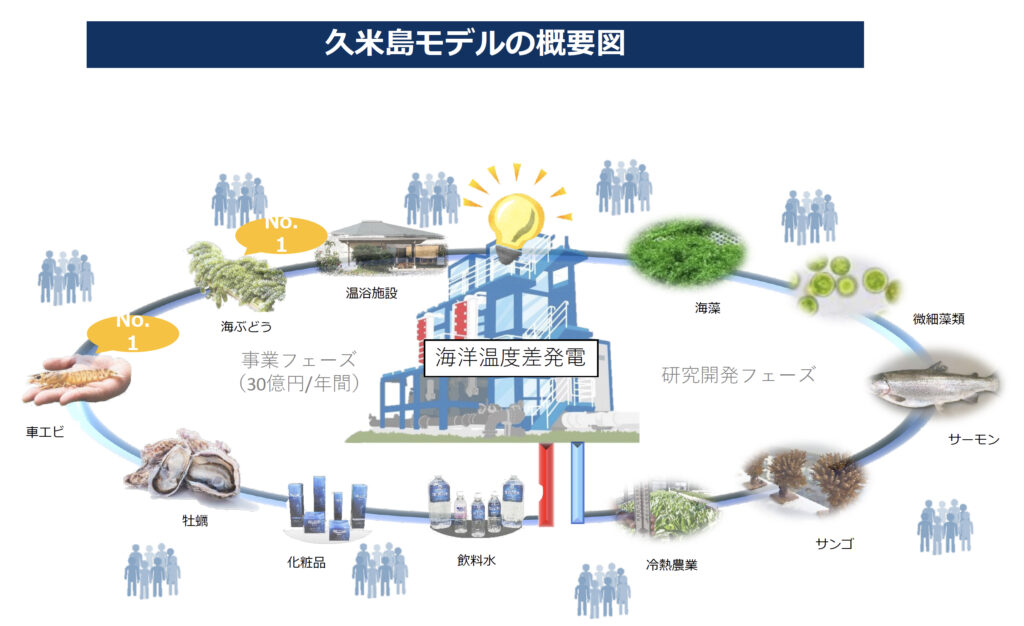
“Oyster larvae prefer warmer water. However, deep ocean water is cold as it is pumped up from the ocean depth. Heating the seawater requires a significant amount of fossil fuel energy and incurs enormous costs. However, the deep ocean water after being used for OTEC is about 5-10 degrees warmer and is ideal for oyster cultivation. Thanks to the Kumejima Model, we can use this water without incurring excessive costs.”
With the Kumejima Model, they have successfully addressed the second challenge mentioned by experts, the heating cost of breeding seawater. The model has developed significantly and is used in various industries, such as farming shrimp and sea grapes and producing drinking water and cosmetics.
A Decade of Trial and Error in Pioneering the World’s First
The Birth of “Ace Sea Oyster 2.0”
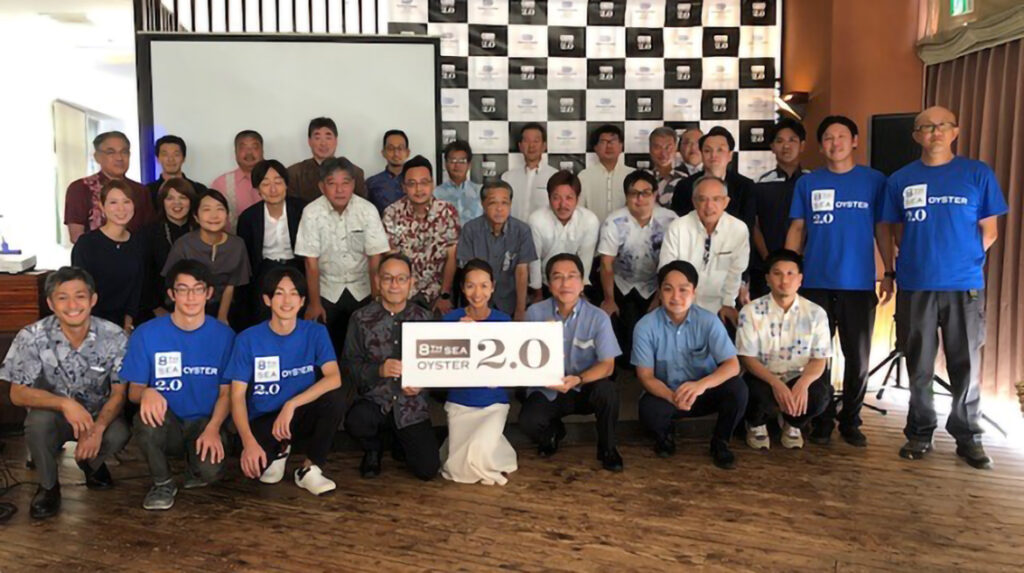
Although it may seem like the business and research progressed smoothly, it took about ten years from the company’s start to successful cultivation. The most time-consuming aspect was setting the conditions for efficient cultivation methods based on the type of microalgae, as it thrives in different optimal environments. Another challenge was setting up the cultivation environment from larvae to adult oysters. Washiashi addressed these three hurdles that the experts raised for land-based oyster cultivation.
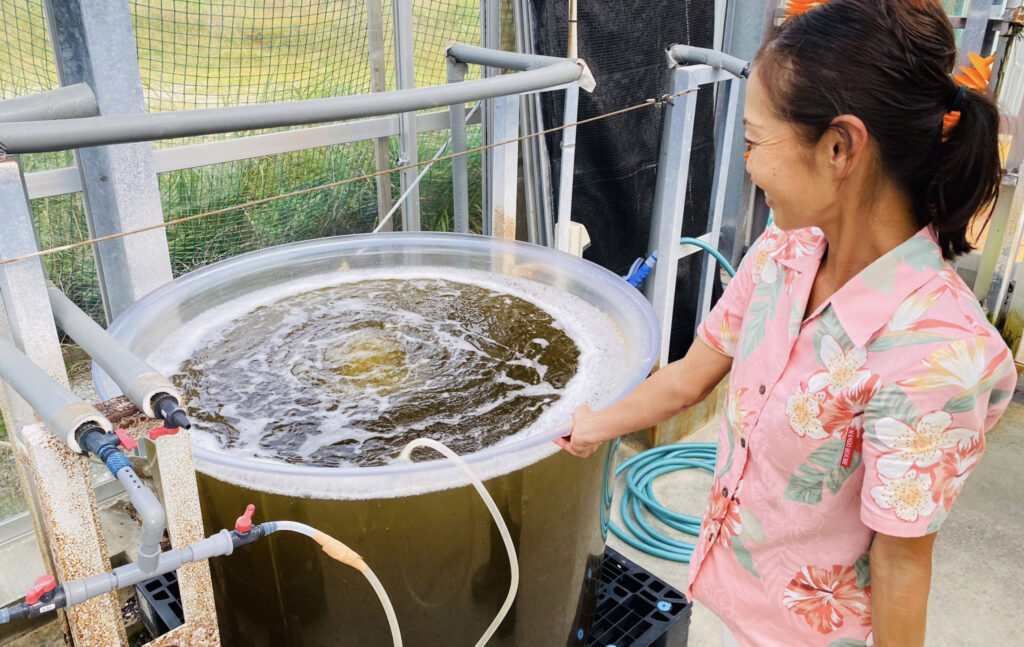
“Depending on each growth stage, we investigated which microalgae, at what size, and the number of times of feeding would be the most optimal. We also considered the water temperature, whether to circulate or stop the seawater in the tank, and the appropriate number of oysters to raise in one tank. We experimented with different combinations of conditions, aiming to find the most efficient breeding environment for each growth stage,” described Washiashi, no doubt a trying feat.
In the summer of 2023, their perseverance paid off, and they publicized the world’s first completely land-based cultivation of virus-free oysters.
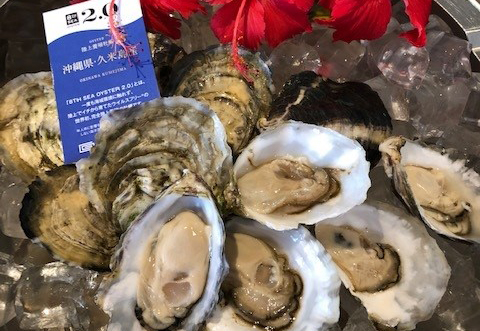
Named ‘Ace Sea Oyster 2.0.,’ these virus-free oysters can be cultivated year-round due to a stable water temperature, with a growth period of about half that of regular oysters for raw consumption. Additionally, it is sweeter and has a higher amino acid content than regular oysters. The flavor can also be controlled by adjusting the feed, thus attracting attention.
The Ace Sea Oyster 2.0 has many benefits; however, as of January 2024, it is unavailable on the market. While it has completed rounds of small-scale experiments in the demonstration facility, the company needs to construct large-scale aquaculture facilities for mass production. Scaling the business is expected to take at least three years. In the meantime, diners can feast on the Ace Sea Oyster 1.0, purified oysters from deep ocean water sourced from around the country using patented technology.
Creating a Sustainable Future for the World’s Environment
through Land-Based Aquaculture
“In recent years, the marine environment has undergone a drastic change. This has resulted in various aquaculture industries, both domestic and international, experiencing poor growth, thus making food shortage a close and realistic problem. It seems necessary for the ocean and land-based aquaculture to coexist, allowing the ocean to rest. I believe this balance is essential for the global environment,” Washiatari explained. She emphasizes the significance of land-based aquaculture as more than just a business but a crucial component in maintaining balance on our Earth. Despite the challenges, she also shared some positive news.
“Kumeshima has generated interest worldwide, and over 12,000 people from more than 70 countries have visited the island. It also raised the attention of JICA (Japan International Cooperation Agency), which initiated a survey project to expand the Kumeshima Model to the Pacific islands,” Washiatari-san shared.

There is considerable interest in installing ocean thermal energy conversion plants on the Pacific islands. These plants would utilize clean energy and benefit the countries’ economies while positively impacting the global environment. JICA also invited Washiatari to visit Palau in May 2023 to see for herself. With GO Farm’s land-based aquaculture technology, producing oysters is possible even in regions below the equator with unfavorable climate conditions.
“It would be wonderful if we could expand oyster cultivation as a part of the Kumejima Model, to island regions,” says Washiatari.
Little did Watariashi know that her desire to create “virus-free oysters” would evolve into international development. She insists there’s so much more she wishes to explore on the field and will likely continue her endeavors for the future of the ocean.
Interview and Text by Minako Narabayashi

